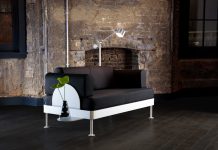
Mia is engaged in a bold experiment, especially within our current cultural climate. When the history and legacy of non-white communities are overlooked, under-researched, or unaddressed, those communities do not stay silent. Artworks, as we’ve seen in the controversy over Walker Art Center’s sculpture displays at the revamped Minneapolis Sculpture Garden, ignite sometimes-incendiary responses to insensitivities, oversights, and just plain ignorance.
So how will Mia’s new set of reimagined period rooms go over? The jury is still out. Four new temporary exhibitions in four different suites of historic interiors from the United States and Europe are on view now through April 15, 2018.
One, called “The Many Voices of Colonial America,” reinterprets the dining and drawing rooms of within the 1772 Charleston house of Col. John Stuart, a slave owner who served as superintendent of Indian Affairs for Britain’s southern colonies. The drawing room includes Cherokee art of the Colonial era that reveals stories of diplomatic relations and travel between the Cherokee Nation and the British Crown. West African and African American objects in the dining room tell of Charleston’s dependence on enslaved West Africans’ knowledge of rice cultivation for food and commercial gain.
The installations are part of a multi-year project intended to “tell the story of Mia’s decorative arts collection by placing the past in dialogue with the present, and fostering a broader conversation that includes the histories of marginalized peoples, the senses, and even time,” according to press material. Objects in “The Many Voices of Colonial America” include an embroidered deerskin coat from the 1800s in which European styling and Cherokee imagery are combined, a 1700s powder horn with scenes from the first Indian Congress at Fort Picolata, a basket by contemporary Cherokee artist Shan Goshorn, and a Cherokee artist’s bandolier bag from the 1800s, as well as West African and African American objects. Cross-cultural storytelling is the intention.

“Science and Sociability in 1700s England,” another installation, delves into the white upper classes’ explorations of science and natural history. Because curious women of that era often conducted their investigations and observations through activities more socially acceptable than, say, spelunking, their embroidery and drawings describe their intellectual forays into botany, astronomy, and electricity.

Another kind of party is examined in “Up All Night in the 18th Century”—the nocturnal soirées hosted by Europe’s upper crust in their opulent homes. Mia’s Grand Salon from the Hôtel de la Bouëxière is animated with games, lighting, and preparations for coffee and chocolate. In “Just Imported: Global Trade in 1700s New England,” a parlor in a Providence, RI, home is festooned with the goods representing the owners’ prosperous import/export business, from sumptuous fabrics to elegant housewares.
Designed to engage visitors in its period rooms and decorative arts collection in new ways, Mia intends to stimulate conversation about colonialism, cultural appropriation, and the role of museums in presenting historic artifacts.
by Camille LeFevre





















